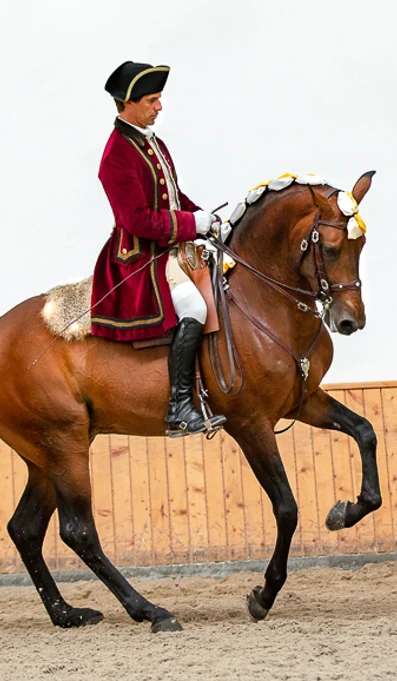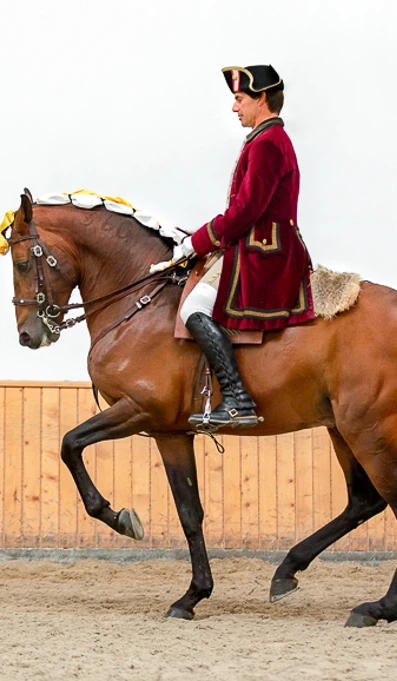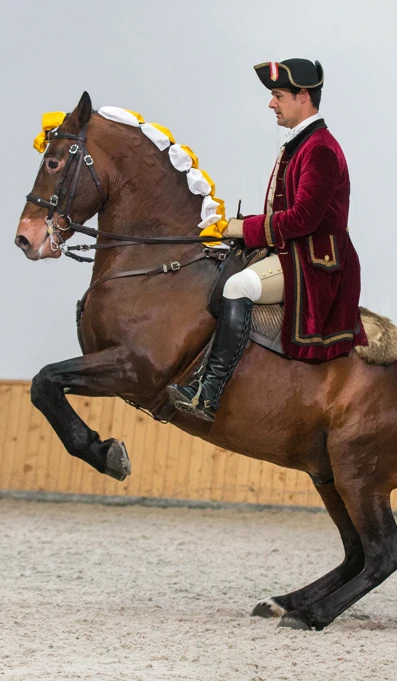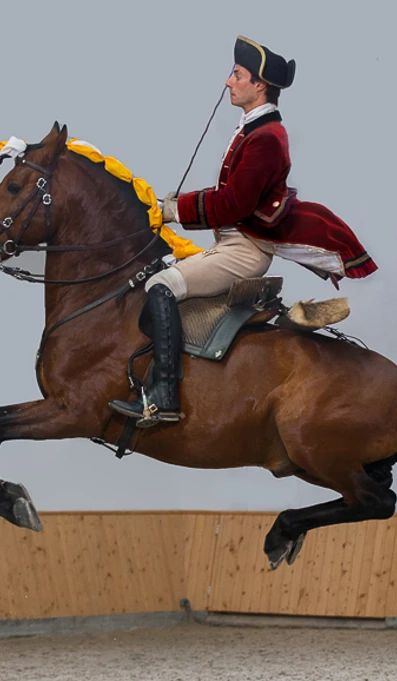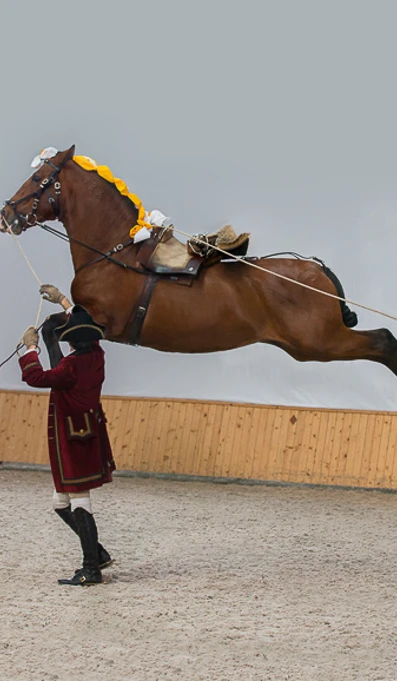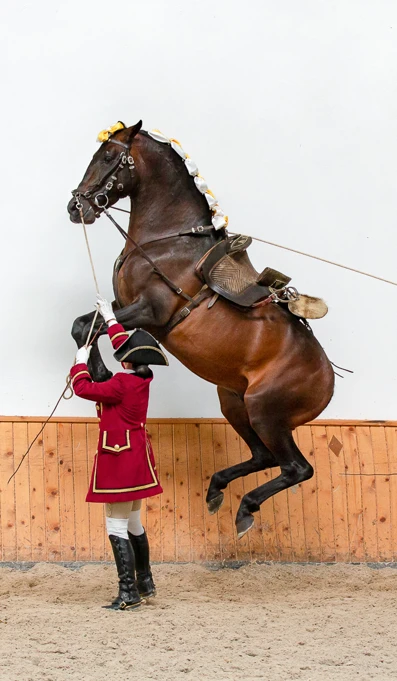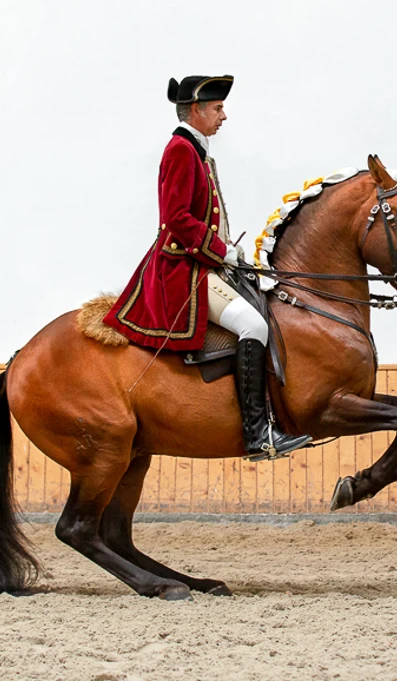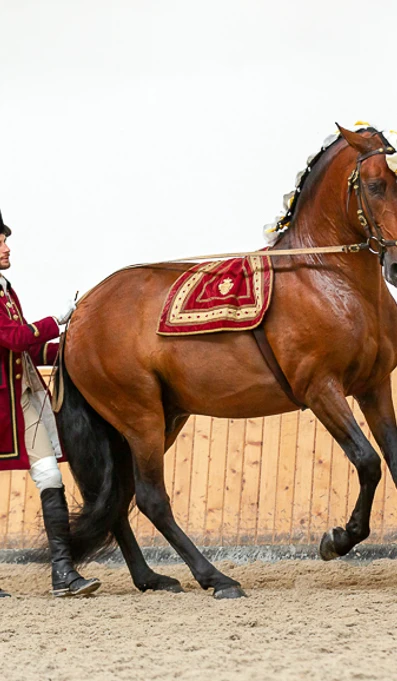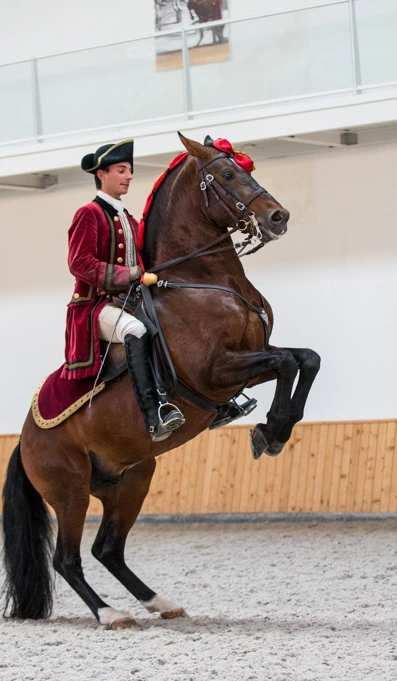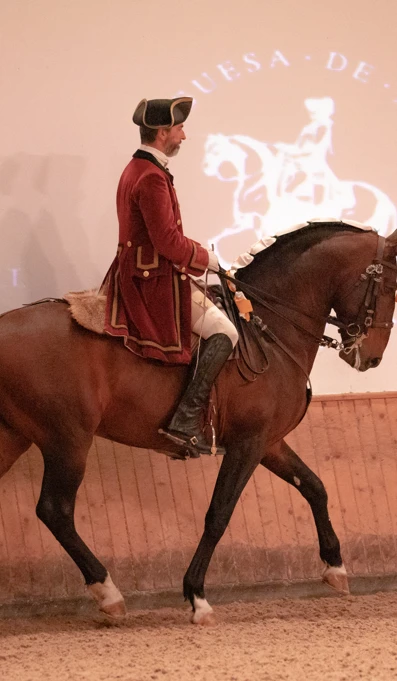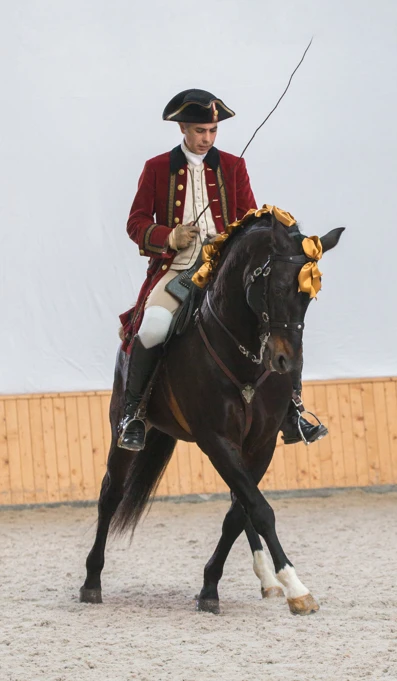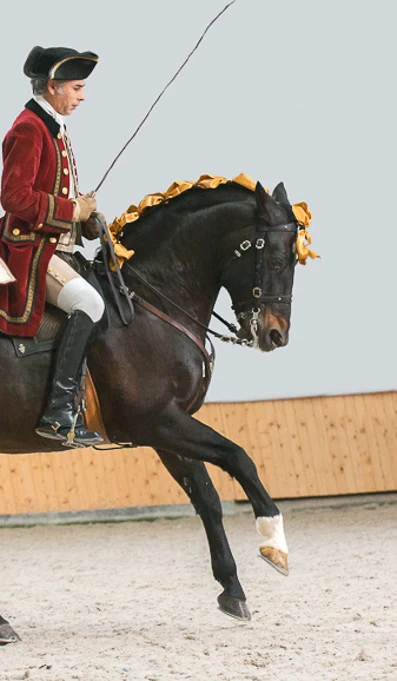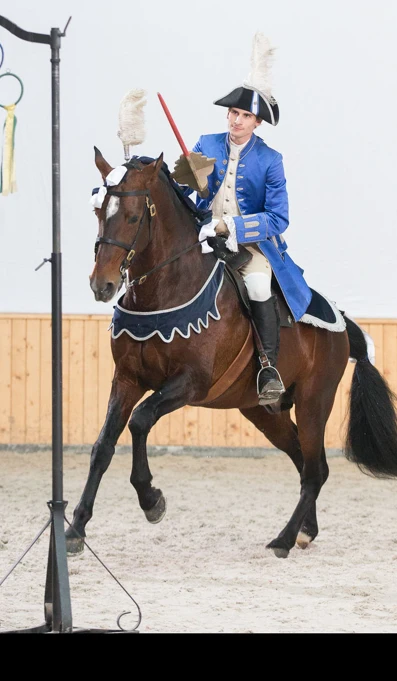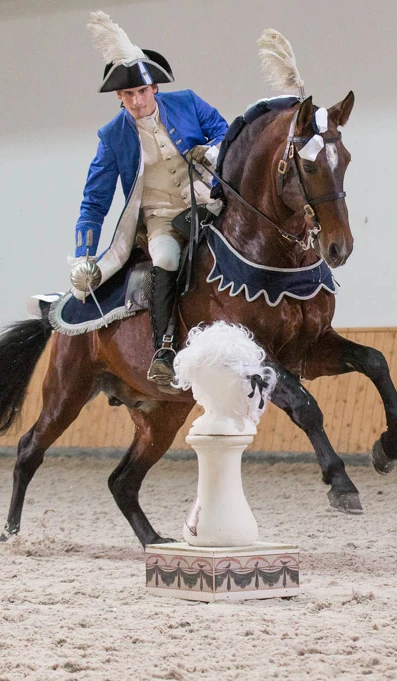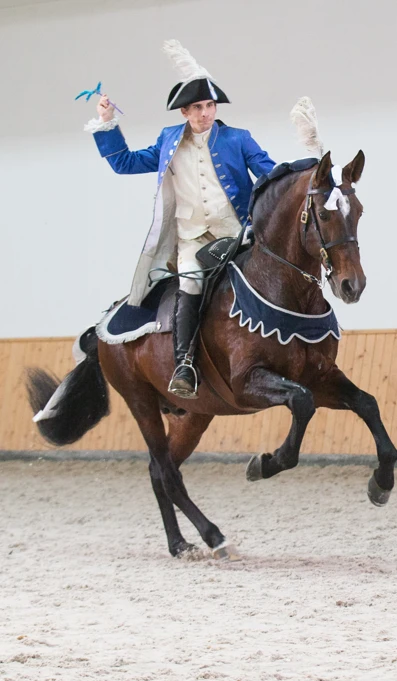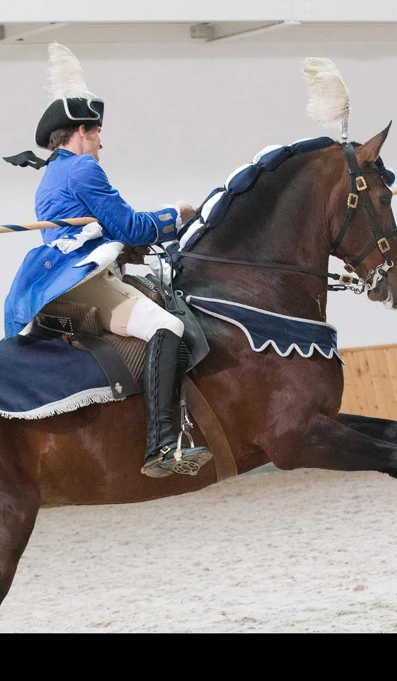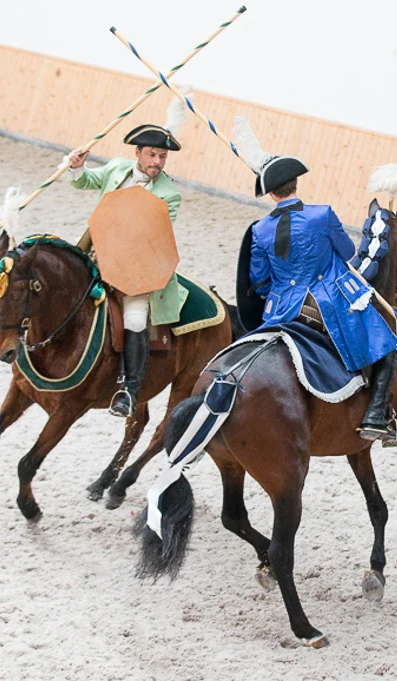Exercises and Numbers
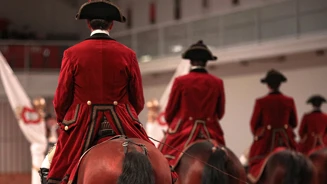
Teaching and training the horses begins with that called the Basse École in which the animal learns to execute, with a perfect balance, the three core movements: walking, trotting and cantering. This initial phase also includes marching laterally, shoulders-in and isolated half-pass exercises.
In a later phase, the horse begins learning the Haute Ecole exercises as formerly performed in the Picaria Real, such as the passage, piaffe, pirouettes, tempi half-passes and as well as the “Airs above the Ground” such as the levades, pousadas, courbettes, balotades and caprioles. The “Airs above the Ground” reflect all of the splendour of Baroque Equestrianism, the very highest standard of riding in the 18th century. For teaching the “Airs above the Ground”, the Riders make recourse to the work in hand techniques. The key preparatory exercise is the piaffe and the respective transitions from walking to trotting, galloping and halting. The work in hand enables greater flexibility and the lateral mobility of the horses ensuring that they gradually gain in concentration and play with their centres of gravity.
The main ''Airs above the Ground'' exercises are the levades, pousadas, courbettes, balotades and caprioles.

